The art of the charlotte
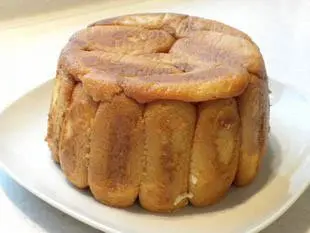
In cooking, a charlotte is a delicious moulded dessert, with biscuits around the outside that have been soaked in a flavoured syrup, filled with a light cream or mousse. The charlotte is left to set in the fridge before being turned out and served in slices.
It is very light and a lovely sweet with which to round off a meal. It is refreshing, too, especially if made with fruit.
It is very light and a lovely sweet with which to round off a meal. It is refreshing, too, especially if made with fruit.
46 K 4.3/5 (18 reviews)
Keywords for this post:PastryCakeCookiesCreamDessertsCharlotteLast modified on: February 27th 2013
The art of the charlotte
Here are some hints on making charlottes.
A charlotte mould is lined in the bottom and around the sides with syrup-soaked biscuits. This outside layer is then filled with a cream and left to set in the fridge (usually overnight).
Of course, it is best to use a proper charlotte mould if possible. This is round and tall with tapering sides which make turning out easier. If the mould is non-stick, so much the better, as there is no need to butter it.
If you are worried that the charlotte will not turn out properly (it might stick on the bottom and fall apart) you can put a circle of paper or plastic film in the bottom of the mould.
Boudoir or sponge finger biscuits are the ones most commonly used – they are just right for this. If you don't have any, you can use slices of genoa sponge or brioche.
The biscuits are soaked in the syrup until they have absorbed some of it up before being arranged around the sides of the mould. The syrup needs to be well-flavoured and quite runny so that the biscuits can soak it up easily (a fruit coulis, for example, is thicker, so would need a longer soaking time).
Please note that there is a delicate balance to be struck between biscuits that are too dry or too soggy. Personally, when using a very liquid syrup (such as coffee), I soak the biscuit in the syrup, then take it out and remove the excess by pressing.
It is traditional to line the mould with biscuits arranged vertically around the side, then arrange more biscuits in the bottom. Of course, the biscuits won't be the right shape and will need to be cut to fit to give an even layer.
Once the outer "casing" is in place, this is filled with a cream that should set when cold. This is typically made with gelatin or agar-agar. One of the best results comes from using (about 50/50) whipped cream with something else that contains dissolved gelatine. This other ingredient can be a fruit coulis (fruit purée), custard (crème anglaise), creamy cheese like mascarpone, etc.
You can also make the charlotte in different layers: cream, diced fruit, cream. However you fill it, do be sure to fill the mould full, even round the top a little, as the cream will tend to sink a little as it sets.
You can also finish with a layer of biscuits, so that the charlotte has a complete outer shell. This is simply for appearance and a matter of taste.
Once the cream has been poured into the mould, cover with plastic film and leave to set in the fridge overnight.
Shortly before serving, turn out carefully and slice vertically. Serve the slices laid flat for best effect, surrounded by a coulis, sauce or custard if you wish.
The dessert's origins are uncertain. The name might refer to the British queen Charlotte who was the wife of George III.
Principle
A charlotte mould is lined in the bottom and around the sides with syrup-soaked biscuits. This outside layer is then filled with a cream and left to set in the fridge (usually overnight).
Mould
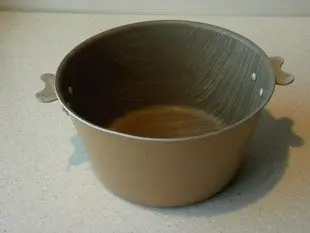
Of course, it is best to use a proper charlotte mould if possible. This is round and tall with tapering sides which make turning out easier. If the mould is non-stick, so much the better, as there is no need to butter it.
If you are worried that the charlotte will not turn out properly (it might stick on the bottom and fall apart) you can put a circle of paper or plastic film in the bottom of the mould.
Biscuits

Boudoir or sponge finger biscuits are the ones most commonly used – they are just right for this. If you don't have any, you can use slices of genoa sponge or brioche.
Soaking syrup
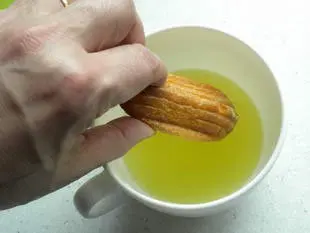
The biscuits are soaked in the syrup until they have absorbed some of it up before being arranged around the sides of the mould. The syrup needs to be well-flavoured and quite runny so that the biscuits can soak it up easily (a fruit coulis, for example, is thicker, so would need a longer soaking time).
Please note that there is a delicate balance to be struck between biscuits that are too dry or too soggy. Personally, when using a very liquid syrup (such as coffee), I soak the biscuit in the syrup, then take it out and remove the excess by pressing.
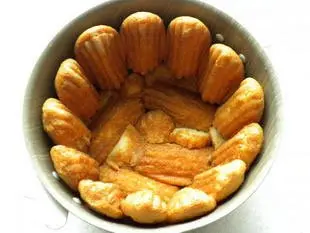
It is traditional to line the mould with biscuits arranged vertically around the side, then arrange more biscuits in the bottom. Of course, the biscuits won't be the right shape and will need to be cut to fit to give an even layer.
Cream filling
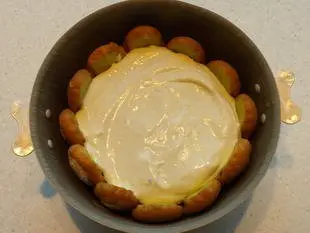
Once the outer "casing" is in place, this is filled with a cream that should set when cold. This is typically made with gelatin or agar-agar. One of the best results comes from using (about 50/50) whipped cream with something else that contains dissolved gelatine. This other ingredient can be a fruit coulis (fruit purée), custard (crème anglaise), creamy cheese like mascarpone, etc.
You can also make the charlotte in different layers: cream, diced fruit, cream. However you fill it, do be sure to fill the mould full, even round the top a little, as the cream will tend to sink a little as it sets.
You can also finish with a layer of biscuits, so that the charlotte has a complete outer shell. This is simply for appearance and a matter of taste.
Once the cream has been poured into the mould, cover with plastic film and leave to set in the fridge overnight.
Shortly before serving, turn out carefully and slice vertically. Serve the slices laid flat for best effect, surrounded by a coulis, sauce or custard if you wish.
Charlotte?

The dessert's origins are uncertain. The name might refer to the British queen Charlotte who was the wife of George III.
Lasts posts
Butter vs. grease
We often read in a recipe where a pastry is put into a mould that, just before pouring, the mould should be buttered or greased. But what's the difference between these 2 terms?December 1st 20258635
Getting out of the fridge early
Very often when you're cooking, you need to take food or preparations out of the fridge, to use them in the recipe in progress. There's nothing tricky about this: you just take them out of the fridge and use them, usually immediately, in the recipe. But is this really a good method?November 24th 20251,0405
Who's making the croissants?
When you look at a bakery from the outside, you naturally think that in the bakery, the bakers make the bread, and in the laboratory, the pastry chefs make the cakes. It's very often like that, with each of these professions having quite different ways of working, but sometimes there's also one...November 23th 2025935
Oven height
When we put a dish or cake in the oven, we naturally tend to put it on the middle shelf, and that's what we usually do. But in some cases, this position and height can be a little tricky, so let's find out why.October 8th 20252,5835
The importance of sieving
In recipes that use a fine powder (flour, powdered sugar, etc.), you'll often see the advice to sift before using it. To sift is to pass the powder in question through a sieve (a very fine strainer) before incorporating it into your recipe. It's often advice, but is it really useful?September 3rd 20257,4383
Other pages you may also like
Well-cooked meat
Have you ever noticed that if you like your meat well done, it invites strange looks? For instance, in a restaurant, when asked “How would you like that cooked?” If you reply, “Well done,” it is almost as if you are swearing….May 21th 201134 K 14.4
How to break eggs properly?
It is a very common gesture in pastry, bakery and of course cooking: breaking eggs to incorporate them into a recipe. You have eggs (which professionals call "shell eggs" to differentiate them from liquid eggs in cartons or cans), and you must break them to incorporate the contents into your...June 26th 202115 K4.8
Butter vs. grease
We often read in a recipe where a pastry is put into a mould that, just before pouring, the mould should be buttered or greased. But what's the difference between these 2 terms?December 1st 20258635
Maillard reactions
This subject cropped up recently in a discussion with my three charming nieces; do you know what Maillard reactions are? With a name like that, they could well be some principle in mechanics, but in fact the term applies to something much closer to all of us: it's what gives food more flavour...January 28th 201538 K4
Different kinds of pastry and dough
When cooking in general, and particularly in baking, we can make and use many different kinds of pastry and dough. All built on the same "base": flour - a powder to which we add fat, liquid or both to produce the dough which is then cooked. .November 6th 2012111 K 14.0
Post a comment or question
Follow this page
If you are interested in this page, you can "follow" it, by entering your email address here. You will then receive a notification immediately each time the page is modified or a new comment is added. Please note that you will need to confirm this following.
Note: We'll never share your e-mail address with anyone else.
Alternatively: you can subscribe to the mailing list of cooling-ez.com , you will receive a e-mail for each new recipe published on the site.








